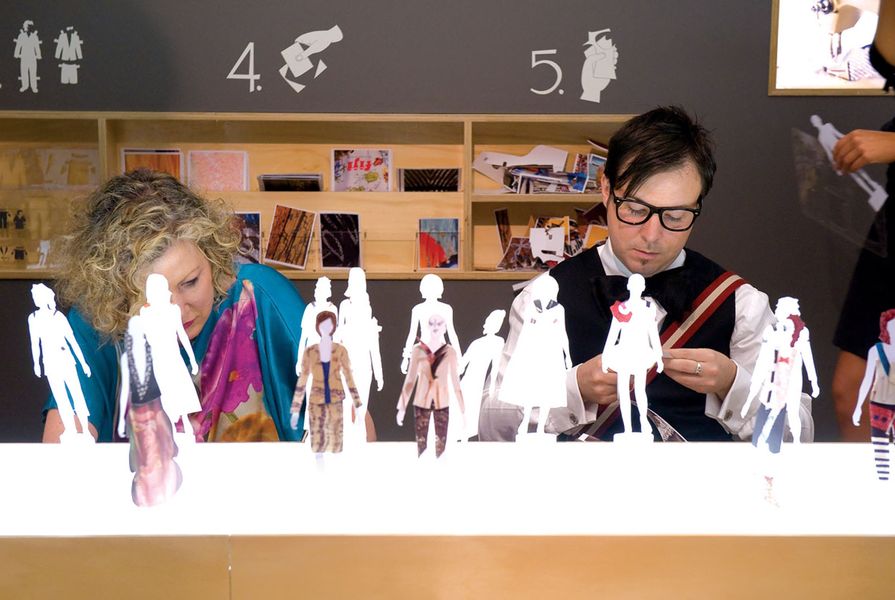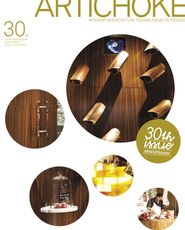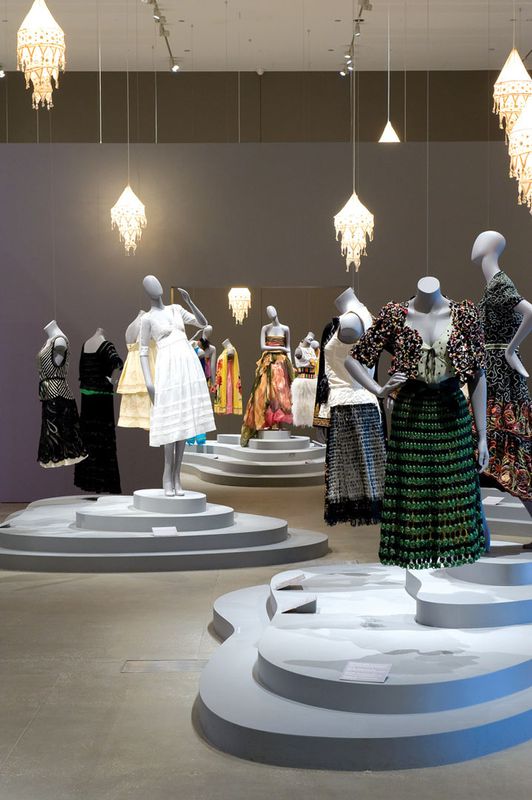The days when art museums only displayed artworks defined via medium or genre are long gone. Queensland Art Gallery director Tony Ellwood sees his institution’s role as “considering modern visual culture in its broadest sense.” But this expansion of the scope of art galleries also brings some challenges for museum staff. For example, the curation, conservation and display requirements of paintings are very different from those of fashion, which was the subject of the gallery’s recent exhibition. Having brought together a major retrospective of over twenty years of work by the Brisbane-based designers Pamela Easton and Lydia Pearson, curator Miranda Wallace observed drily that “there was a hell of a lot to learn about mannequins.”
The move from art to fashion also entailed a philosophical shift in the role of exhibition design – in the Easton Pearson show the design, though still recessive enough to leave most of the attention on the clothes, is more forward than one would usually find in an art gallery. The exhibition designers’ biggest move was to arrange the plinths as islands throughout the space, progressively stepping upward in height to underscore the concept of topography. These plinths had the dual role of acting as elevation for the mannequins and holding visitors at a respectful distance from the clothes. This display made it possible to get much closer to the artefacts than usual – at the Victoria and Albert or the Powerhouse Museum it is rare to see a garment not protected by a vitrine. Because the seventy-five outfits in the Easton Pearson show were largely drawn from the label’s own archives, the usual conservation requirements could be somewhat relaxed. Before I went to see the exhibition, someone told me that visitors had been observed reaching out to touch the clothes, just as you would if you were in a shop, dreamily considering whether to buy. This behaviour may be enough to start any museum professional hyperventilating, but it was a pleasure for anyone who wanted to lean close and observe the quality of the fabrics and the intricate workmanship that characterize Easton Pearson’s work.
The opening feature wall displayed an array of fresh pineapples, each perched upright on its own stand (changed weekly, I was told by Michael O’Sullivan, the exhibition designer), which wafted a slight odour of sweetness through the exhibition. Behind this was a simple enfilade of four rooms, each with its own curatorial theme based on ideas and techniques traced through the body of Easton Pearson’s work. These include “Straw and Silk,” which examined the juxtaposition of fine and raw fibres, and “Time Travel,” which explored the way the designers have paid homage to the history of clothing. The exhibition visually culminated in an elaborate beaded dress, commissioned and made especially for the show, but the stream of parents and children passing to one side of this and heading towards the adjoining Children’s Art Centre showed what was for many the real highlight of the show.
The Easton Pearson Workroom went behind the scenes at a fashion house, with showcases displaying paper patterns, design ephemera, bolts of fabric, jars of sequins and a hilarious mini-documentary in which local schoolchildren interviewed the two women about their work. But the main point of the workroom was for children (and their gleeful parents) to play at being fashion designers by dressing a paper model in paper clothes using Easton Pearson templates and “fabric.” There was even helpful advice on how to create a more “edgy” look (by tearing the paper instead of cutting it), how to make paper pleats, and how to fold accessories from paper scraps. The final models were surprisingly groovy and well finished, and while many people elected to take their completed models home, others left them for display on the catwalk lightbox that ran down the middle of the workbench.
Kate Ryan of the Children’s Art Centre said they ran through the entire stock of twenty thousand paper mannequins ordered for the show – a testament to the sheer popularity of this space and its activities, and to the dedicated following it has built among Brisbane parents across a number of exhibitions. It is also a testament to an institution that takes children’s programs seriously – not as an afterthought, but as an integrally conceived and well-designed part of the exhibition. As an exercise in audience development and creative interaction with the work on display, it’s a triumph.
Credits
- Project
- Easton Pearson
- Project Team
- Carolyne Jackson, Don Heron, Miranda Wallace, Michael O'Sullivan
- Site Details
-
Location
Queensland Art Gallery Gallery of Modern Art, Stanley Place,
South Brisbane,
Brisbane,
Qld,
Australia
- Project Details
-
Type
Culture / arts,
Exhibitions






















